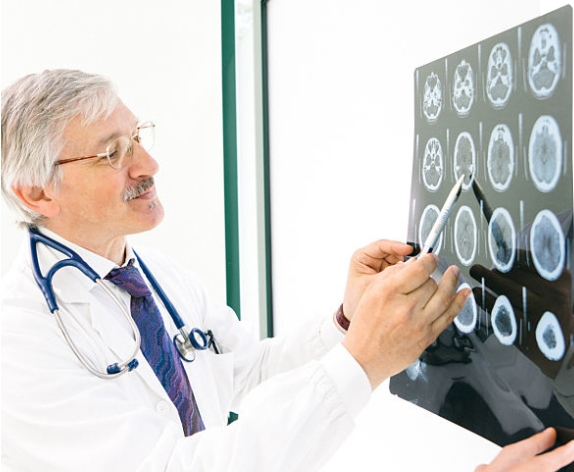ASLEEP DEEP BRAIN STIMULATION

A novel technique for treating Parkinson’s disease
Deep brain stimulation, or DBS, is a treatment that can dramatically improve many symptoms of Parkinson’s disease, including tremors, stiffness and slowness of the arms and legs. DBS can also provide significant relief to patients with essential tremors and dystonia (abnormal muscle contractions).
You may be thinking, “How does brain surgery help muscle problems?” First you need to understand the source of the symptoms. When a patient experiences symptoms of tremor, stiffness, slowness or any abnormal movements, the source of these problems is actually not in the muscles themselves but in the brain. Science has shown that bad electrical brain activity is the reason patients experience these symptoms.
This irregular, or abnormal, brain activity can be fixed by small, safe amounts of electricity delivered directly into the brain itself so that it starts working more normally. This is why DBS is sometimes referred to as a “brain pacemaker.” Like the heart, the brain starts working better when it receives small, regular pulses of electricity through the DBS system. DBS is a reversible therapy and can be turned off and/or completely removed if an alternative treatment or cure becomes available for the patient’s disease.
DBS in a regular operating room is the traditional, or older, way of performing this procedure. For this type of surgery, patients must stop all of their medications the night before surgery. The majority of Parkinson’s patients become immobile and psychologically stressed when off medications and may find it difficult or painful to stop medication the night before surgery. Patients are lightly sedated during the beginning and the end of the surgery but are awake and speaking with the doctors in the middle of the surgery so certain symptoms, like tremor, can be tested. This more traditional type of surgery is difficult for the multitude of patients who are rightly concerned about the distress and trauma of undergoing awake brain surgery.
Traditional DBS has largely been replaced by a technique called “asleep DBS.”
“Asleep DBS” is an updated surgical procedure for placement of deep brain stimulating electrodes while the patient sleeps under general anesthesia. This surgery is performed in an interventional MRI suite and provides enhanced comfort for patients, including those with dystonia, tremors, or Parkinson’s disease. When a patient has DBS in the MRI, he/ she may take their usual medications on the morning of surgery. The patient also has a breathing tube in place for this entire procedure. There is no part of this surgery where the patient needs to be awake and speaking with the doctor. The patient sleeps the entire time and is awakened gently when the surgery is all over.
The MRI produces high-quality images that give the surgeon a detailed look at the brain, and it does not expose the patient to the radiation of other imaging methods, like computed tomography scans. This way the doctor can rely on continual MRI scans of the brain throughout the entire procedure to achieve maximum accuracy and safety. Willis-Knighton Medical Center in Shreveport, Baylor in Houston, Emory in Atlanta and Mayo Clinic in Jacksonville are the only four centers in the South to offer this specialized therapy to adults.
Dr. Jessica Wilden is a neurosurgeon and founding partner at Tri-State Neurosurgery located at Willis- Knighton Medical Center in Shreveport, part of the Willis-Knighton Physician Network.
